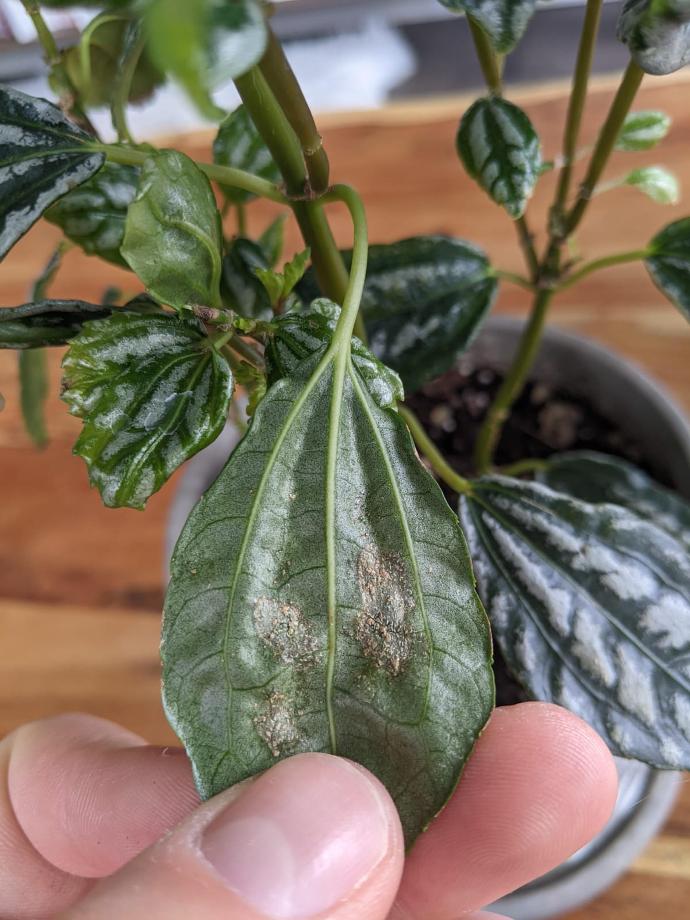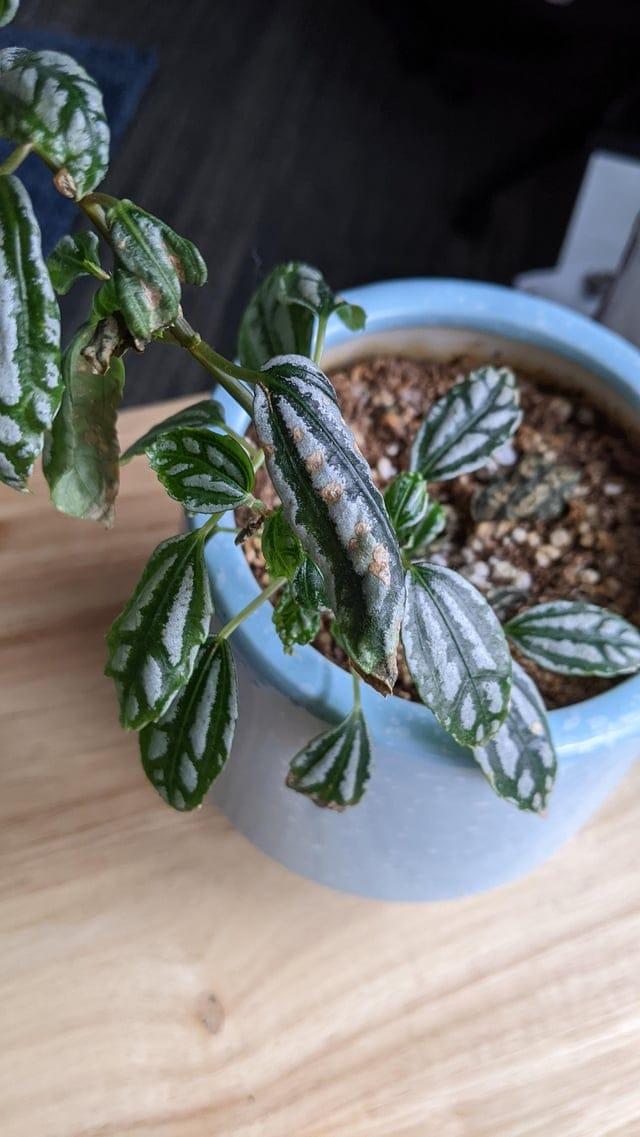Aluminum Plant
ALUMINIUM PLANT, also known as Aluminum Plant, is an attractive foliage plant. It prefers indirect light and well-draining soil. Keep the soil consistently moist but not waterlogged. Regular pruning helps maintain a compact shape and promotes healthy leaf growth.
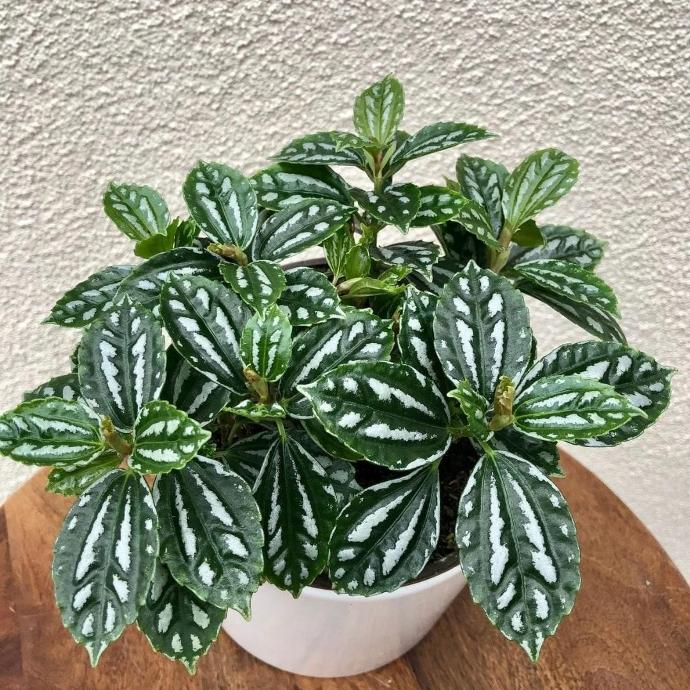
Habit
Perennial
Height
12-18 inches
Growth
Moderate
Soil
Well Drained, Fertile
Shade
Low to Moderate light
Moisture
Moist
Edible
No
Medicinal
No
Origin
Southeast Asia
Climatic Condition
Tropical, Humid
Temperature (°)
18-30
Humidity (%)
60-80%
Potting media
Peat+Perlite
Fertilizers
Balanced NPK(10:10:10)
Watering
Keep Moist
Plant Weight
50-70 g
Flowering Time
Spring to Summer
Soil Ph level
5.5-6.5
Water Ph level
6.0-7.0
Soil EC
0.6 dS/m
Yield Per Plant
Low Yield
NPK ratio
10:10:10
life Span
3-5 yrs
Health Benefits
Suggested Grow Media or Potting Mix ?
40% peat moss, 30% perlite, 30% compost
Suggested Fertigation/Fertilizers
Fertilize every 2 weeks with a balanced, water-soluble fertilizer.
Common Diseases and Remedies
Leaf Spots .
This infection can cause brown spots or patches to appear on the plant. Natural aging can cause leaves to turn yellow and dry out.
Remove the infected leaves.
Repotting , pruning , Add a small amount of base fertilizer during transplanting or repotting.
HEALTH BENEFITS
The Aluminum Plant (Pilea cadierei) is a popular, low-maintenance houseplant native to China and Vietnam. While it's primarily grown for its attractive, metallic-sheened leaves, the Aluminum Plant also offers some potential health benefits:
Health Benefits
1. Air Purification: Like many houseplants, the Aluminum Plant helps remove air pollutants, such as formaldehyde and benzene, from indoor spaces.
2. Stress Reduction: Studies have shown that being around plants, including the Aluminum Plant, can reduce stress levels, improve mood, and promote relaxation.
3. Improved Sleep: The Aluminum Plant's air-purifying properties can help create a healthier sleep environment, promoting better sleep quality and duration.
4. Boosted Immune System: Some research suggests that being around plants like the Aluminum Plant can strengthen the immune system by increasing the production of natural killer cells.
5. Mental Health Benefits: Caring for plants, including the Aluminum Plant, can provide a sense of purpose and fulfillment, which can be beneficial for mental health.
What Is An Aluminum Plant ?
Lead plant, also known as Pilea cadierei, is a beautiful houseplant appreciated for its beautiful green leaves and metallic markings. It is easy to care for, needs moderate light and regular water. Aluminum plants are known for their decorative value and are often used in decorating homes and offices.
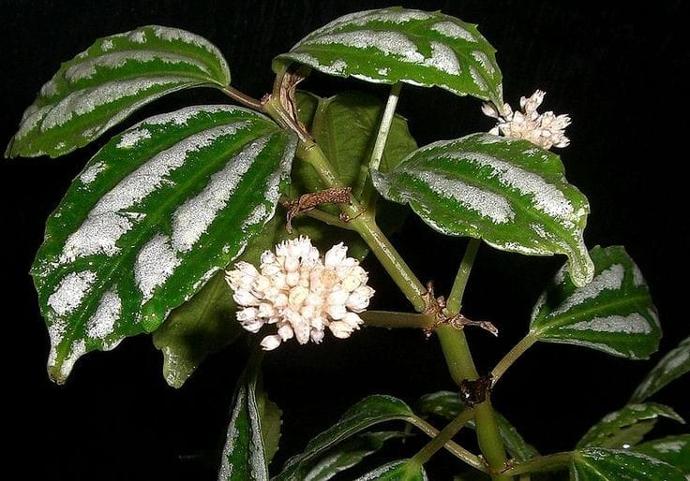
What Are The Different Types Of Aluminum Plants?
1. Pilea cadierei 'Aluminum Plant'
A variety with green leaves and metallic markings.
2. Pilea cadierei 'Minima'
Compact, generally with small leaves, suitable for small areas.
3. Pilea cadierei 'Moon Valley'
Known for its deep moon-like leaves.
4. Pilea cadierei 'Norfolk'
Leaves are wider than the standard variety.
5. Pilea cadierei 'Dark Mystery'
A variety with dark green leaves that add a nice contrast to the silvery green appearance.
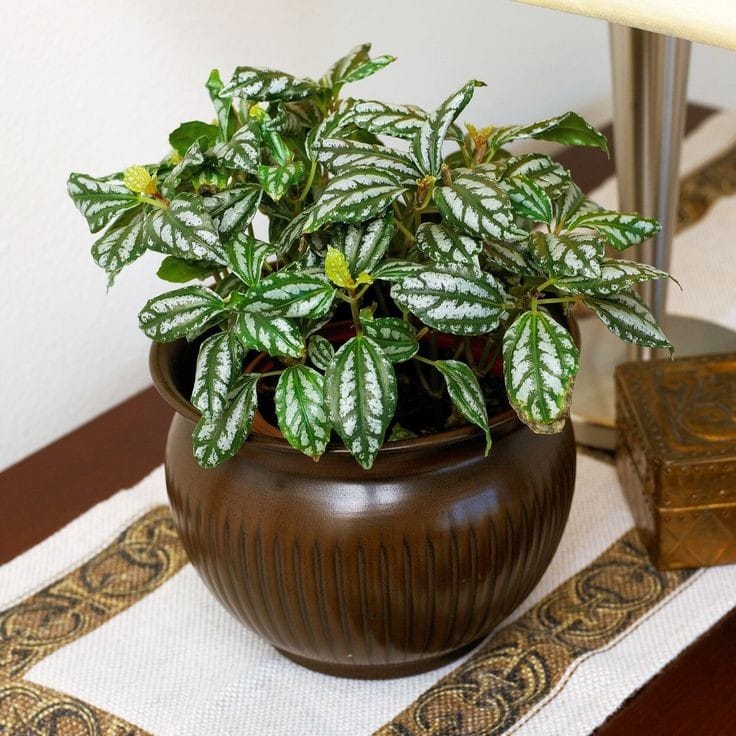
How to Care Aluminum Plant ?
1. Location
Pilea cadierei or aluminum plants are often grown as houseplants. It fits well into the interior of the house and is appreciated for its decorative quality. However, it is not frost resistant and should not be planted in open areas where temperatures fall below tolerance (usually 10° C). For best growth, place cool water flowers indoors where you can more easily control light, temperature and humidity. It adds a nice touch to your home or office environment.
2. Sunshine
Pilea cadierei (aluminum type) prefers bright, indirect light. Here are some tips for providing good sunlight. Place the plant in a bright, filtered area. It can tolerate some direct sunlight, especially in the morning or evening hours, but is not exposed to sunlight for long periods of time.
3. Soil
It is important to use well-drained soil for Pilea cadierei (aluminium plant). Here is a simple recipe for mixing soil: You can find ready-made mixes specifically for tropical or indoor plants. These usually contain a mixture of peat moss, perlite and pine bark. If the potting mix does not contain perlite, adding some may improve drainage. Mix potting mix with additional options in proportions to ensure good aeration and drainage. The goal is a combination that retains some moisture but resists water. Place your cold water flowers in a perforated container to drain excess water. It is important to choose the right soil to prevent overwatering problems and provide a good environment for tree roots. Repot the plant as needed, usually every 1-2 years, especially if it has outgrown its current container or you are seeing loss of health.
4. Hydration
Proper watering, cool water is very important for the health of your florist. Here are some watering tips: Keep the soil moist but not wet at all times. Allow the topsoil (2.5 cm) to dry before watering again. Use room temperature water and, if possible, let it sit for a day before using tap water. This will help disperse any chlorine or fluoride that is harmful to some houseplants. Water when the top layer of soil feels dry to the touch. Frequency depends on temperature, humidity and specific conditions in your home. Generally water once a week, but adjust according to the plant's needs. Make sure the pot has drainage holes to drain excess water. Do not place the plant in standing water as this can cause root rot

5. Nourishment
Choose a balanced fertilizer with an equal or similar ratio of nitrogen, phosphorus and potassium, such as 10-10-10 or 20-20-20. This ensures that your plants receive the essential nutrients they need for full growth. Apply cold water every 4-6 weeks during the growing season (spring and summer). You can reduce or stop fertilizing in autumn and winter because plants grow slowly during this period. Follow the instructions on the fertilizer packaging for dilution rates. It is generally recommended to dilute the fertilizer to half or one-third of the recommended amount to avoid over-fertilization which will cause problems for the plants. Use diluted fertilizer into the soil during regular watering of plants. Avoid contact with leaves to prevent burns. Regular fertilization will help ensure your cold water flowers receive the nutrients they need for optimum growth. Be sure to read and follow any specific instructions that come with the fertilizer you choose. Adjust the frequency according to the plants' response and the specific conditions in your home.
6. Issues
Regularly inspect your Pilea cadierei for any signs of issues, and address them promptly to ensure the plant's health and vitality. Adjust care based on the specific conditions in your home and the plant's responses.
What are the Benefits of Aluminum Plant ?
While Pilea cadierei, or the aluminum plant, is primarily grown for its ornamental value, it can offer some indirect benefits: Like many houseplants, Pilea cadierei contributes to air purification by absorbing certain pollutants and releasing oxygen. The distinctive silver-green leaves with metallic markings make Pilea cadierei a visually appealing addition to indoor spaces, enhancing the overall aesthetic. Pilea cadierei is relatively easy to care for, making it an ideal choice for both beginners and experienced plant enthusiasts. Its adaptability and resilience make it a low-maintenance option. Indoor plants, including Pilea cadierei, have been associated with reducing stress and promoting a sense of well-being. The act of caring for a plant can be therapeutic. While the primary benefits are aesthetic and psychological, having indoor plants like Pilea cadierei can contribute to creating a healthier and more enjoyable indoor environment.
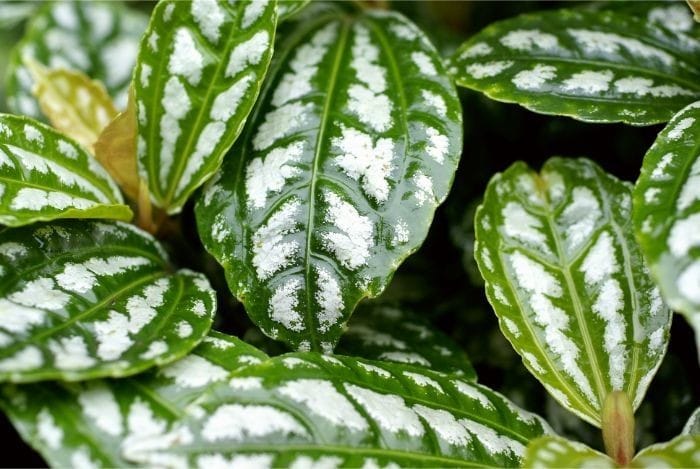
FAQs About Growing Aluminum Plant
1. How to maintain aluminum plant?
Health Pilea cadierei (lead plant) has many important properties: Place plants in a location with bright, indirect light. Adjust the area according to the intensity of the sun to avoid burning. Keep the soil moist at all times but not waterlogged. Wait for the soil surface to dry before watering. Adjust the frequency according to the environment. Pilea cadierei prefers higher humidity but can tolerate moderate humidity. If necessary, increase the humidity, especially in a dry place in the house.
2. What are the uses of aluminum plant ?
It is mostly grown for ornamental purposes. Its purpose is good, its value is as follows: Pilea cadierei is a popular choice for interior decoration, adding a touch of greenery and special trees to the home, office, or other location inside. Its compact size and attractive leaves make it suitable for tabletops, shelves or small spaces, enhancing the overall decor. Although it does not have as many direct uses as other herbs, its beauty benefits and ease of care make it a popular choice among those who like to grow it at home.
3. Which pot is best for growing aluminum plant?
Choose a pot with enough space for the plant's roots to grow. Generally, a container 1-2 inches larger in diameter than the existing pot is suitable. Make sure there is drainage at the bottom of the pot. Well-drained soil and proper drainage prevent poor water quality that can cause root rot.
4. How to propagate aluminum plant?
You can propagate Pilea cadierei (lead plant) by a method called stem cutting or leaf cutting. Choose healthy plant . Choose beautiful and mature flowers for the presentation process. Use clean, sharp scissors or pruners to cut. Aim for a stem a few inches long and make sure it has a few leaves attached.
